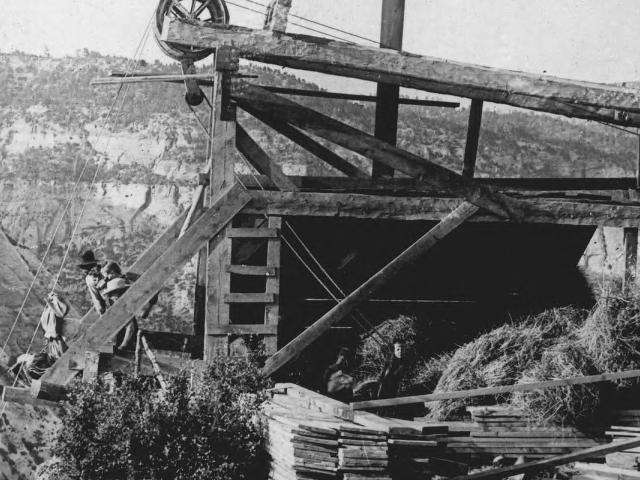
WASHINGTON COUNTY HISTORICAL SOCIETY (Washington County, Utah)
CABLE MOUNTAIN DRAW WORKS
LOCATION
On the top of Cable Mountain, on the east side of Zion Canyon.Sec 2, T41S, R9W in Zion National Park
DESCRIPTION
The Cable Mountain Draw Works, a braced wooden headframe structure, was fitted with cables used to lower lumber from the summit of Cable Mountain down a 2,000-foot vertical cliff to the canyon floor. The dimensions of the structure, located at the edge of the cliff, are approximately 30 feet in length, 16 feet wide, and 14 feet high.The supports and framing are partially collapsed, weathered, and generally deteriorated, though the overall outline and form of the original structure is intact. Some of the hardware, including pulleys, are still at the cable site, but are no longer integrated with the framework of the structure.
During operation, there were two snubbing posts set in the ground at the base of the cliff. They were used to separate the endless cable and provide tracking width for the cable as it carried down lumber on a trolley device. There are no physical remains of this lower portion of the operation.
HISTORY
The Cable Mountain Draw Works is a unique focal point of pioneer activity in Zion Canyon. The design and construction of this structure was the work of one man, David Flanagan of Springdale, Utah. Flanagan saw the need for a local source of lumber for the inhabitants of the area and located an adequate supply of timber on top of Cable Mountain. However, the timber source was inaccessible from the canyon floor at the foot of the mountain and Flanagan devised a system of cable works running from the mountain top to the bottom of the canyon to bring down lumber. Prior to this, lumber was obtained by making a ten-day round trip to the nearest source.Flanagan's design encountered much initial skepticism from local people. He had first conceived a cable works in 1885 as a fifteen-year old youth and by 1904, after much experimentation and failures, had the cable works, in operation. Flanagan operated the cable works until 1906 when he sold it to Alfred Stout and 0. D. Gifford of Springdale. The Cable Mountain Timber Works operation continued intermittently until 1926 when it was abandoned. The cable was removed in 1930. The remains of the draw works represent twenty-two years of adaptive use as the structure was in constant design evolution during its operation.
The structure will be recorded to the standards of the Historic American Engineering Record (HAER) with consideration for long term preservation being a scale model. Visitor access to the very precipitous site, also subjected to severe lightening storms, will be restricted.
Put on the National Register of Historic Places (#78000281) on May 24, 1978.
PHOTOS
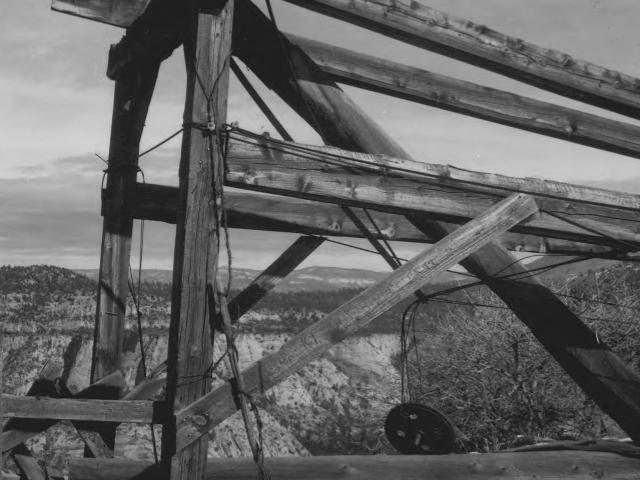 Front of the headframe, facing northeast |
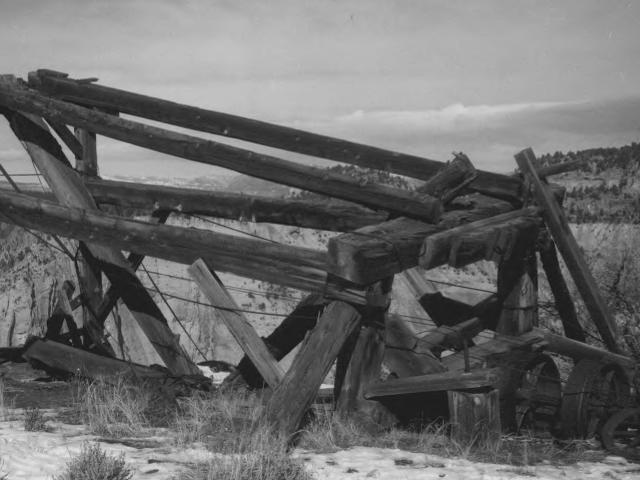 Headframe, facing northwest |
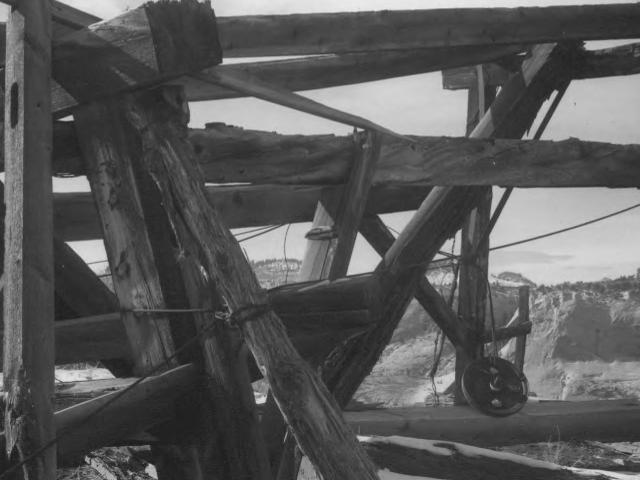 Right rear of the headframe, facing southwest |
 Headframe in operation, facing northwest |
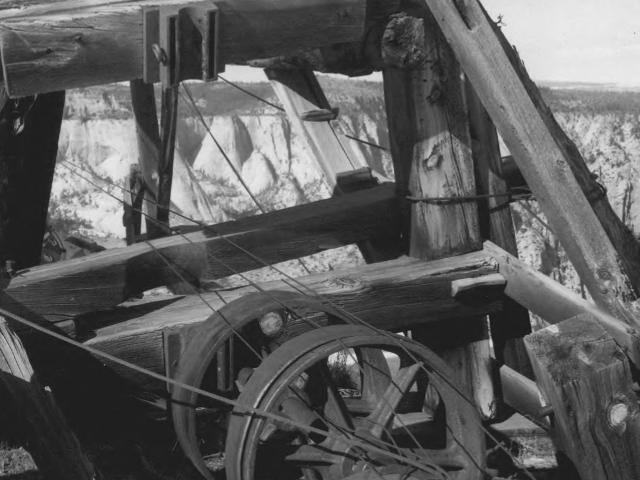 Rear of the headframe, facing west |
Photos on the web:
Photos from the Cable Mountain hike
Photos from the National Register of Historic Places nomination form
REFERENCES
National Register of Historic Places, Inventory - Nomination Form"Like A Hawk Flying" by Earl Spendlove
Vintage Desert Magazine: The Magazine of the Great American Desert, Volume 31, Number 1, November 1971, pp. 24, 25, 31, ...
Cable Mountain hike
"Cable Mountain"
Pages 31-33 in "Selected Topics Related To Hurricane, Utah"
Written and/or compiled by Victor Hall, 2003.